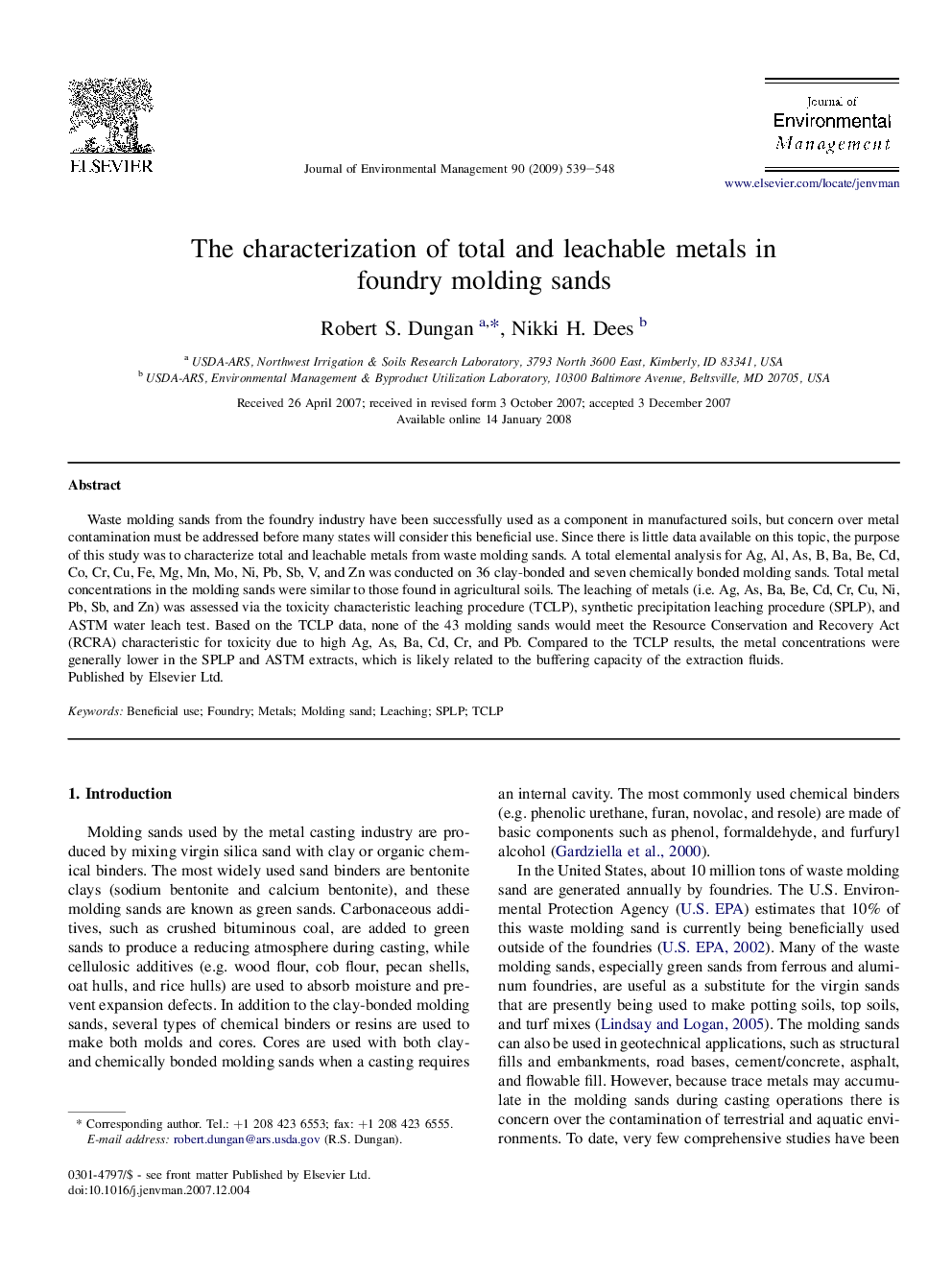| Article ID | Journal | Published Year | Pages | File Type |
|---|---|---|---|---|
| 1058122 | Journal of Environmental Management | 2009 | 10 Pages |
Waste molding sands from the foundry industry have been successfully used as a component in manufactured soils, but concern over metal contamination must be addressed before many states will consider this beneficial use. Since there is little data available on this topic, the purpose of this study was to characterize total and leachable metals from waste molding sands. A total elemental analysis for Ag, Al, As, B, Ba, Be, Cd, Co, Cr, Cu, Fe, Mg, Mn, Mo, Ni, Pb, Sb, V, and Zn was conducted on 36 clay-bonded and seven chemically bonded molding sands. Total metal concentrations in the molding sands were similar to those found in agricultural soils. The leaching of metals (i.e. Ag, As, Ba, Be, Cd, Cr, Cu, Ni, Pb, Sb, and Zn) was assessed via the toxicity characteristic leaching procedure (TCLP), synthetic precipitation leaching procedure (SPLP), and ASTM water leach test. Based on the TCLP data, none of the 43 molding sands would meet the Resource Conservation and Recovery Act (RCRA) characteristic for toxicity due to high Ag, As, Ba, Cd, Cr, and Pb. Compared to the TCLP results, the metal concentrations were generally lower in the SPLP and ASTM extracts, which is likely related to the buffering capacity of the extraction fluids.
